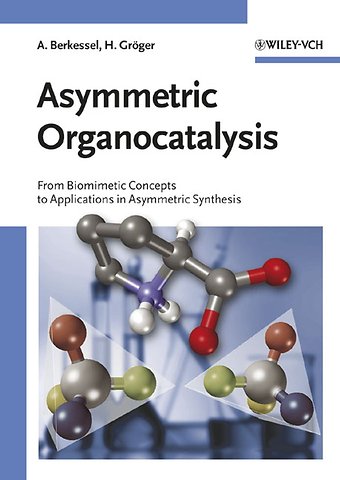

Asymmetric Organocatalysis – From Biomimetic Concepts to Applications in Asymmetric Synthesis
From Biomimetic Concepts to Applications in Asymmetric Synthesis
Samenvatting
Asymmetric catalysis represents still one of the major challenges in modern organic chemistry. Besides the well–established asymmetric metal–complex–catalysed syntheses and biocatalysis, the use of "pure" organic catalysts turned out to be an additional efficient tool for the synthesis of chiral building blocks. In this handbook, the experienced authors from academia and industry provide the first overview of the important use of such metal–free organic catalysts in organic chemistry. With its comprehensive description of numerous reaction types, e.g., nucleophilic substitution and addition reactions as well as cycloadditions and redox reactions, this book targets organic chemists working in industry and academia, and deserves a place in every laboratory.
Specificaties
Inhoudsopgave
<br /> General Mechanistic Considerations
<br /> Nucleophilic Substitution at Aliphatic Carbon
<br /> Nucleophilic Addition to Electron–deficient C=C Double Bonds
<br /> Nucleophilic Addition to C=N Double Bonds
<br /> Nucleophilic Addition to C=O Double Bonds
<br /> Nucleophilic Addition to Unsaturated Nitrogen
<br /> Cycloaddition Reactions
<br /> Protonation of Enolates and Tautomerization of Enols
<br /> Oxidation
<br /> Reduction of Carbonyl Compounds
<br /> Kinetic Resolution of Racemic Alcohols and Amines
<br /> Desymmetrization and Kinetic Resolution of Anhydrides
<br /> Large–Scale Applications
<br /> Appendix: Tabular Survey of Organo–Catalysts, Synthesis and Application